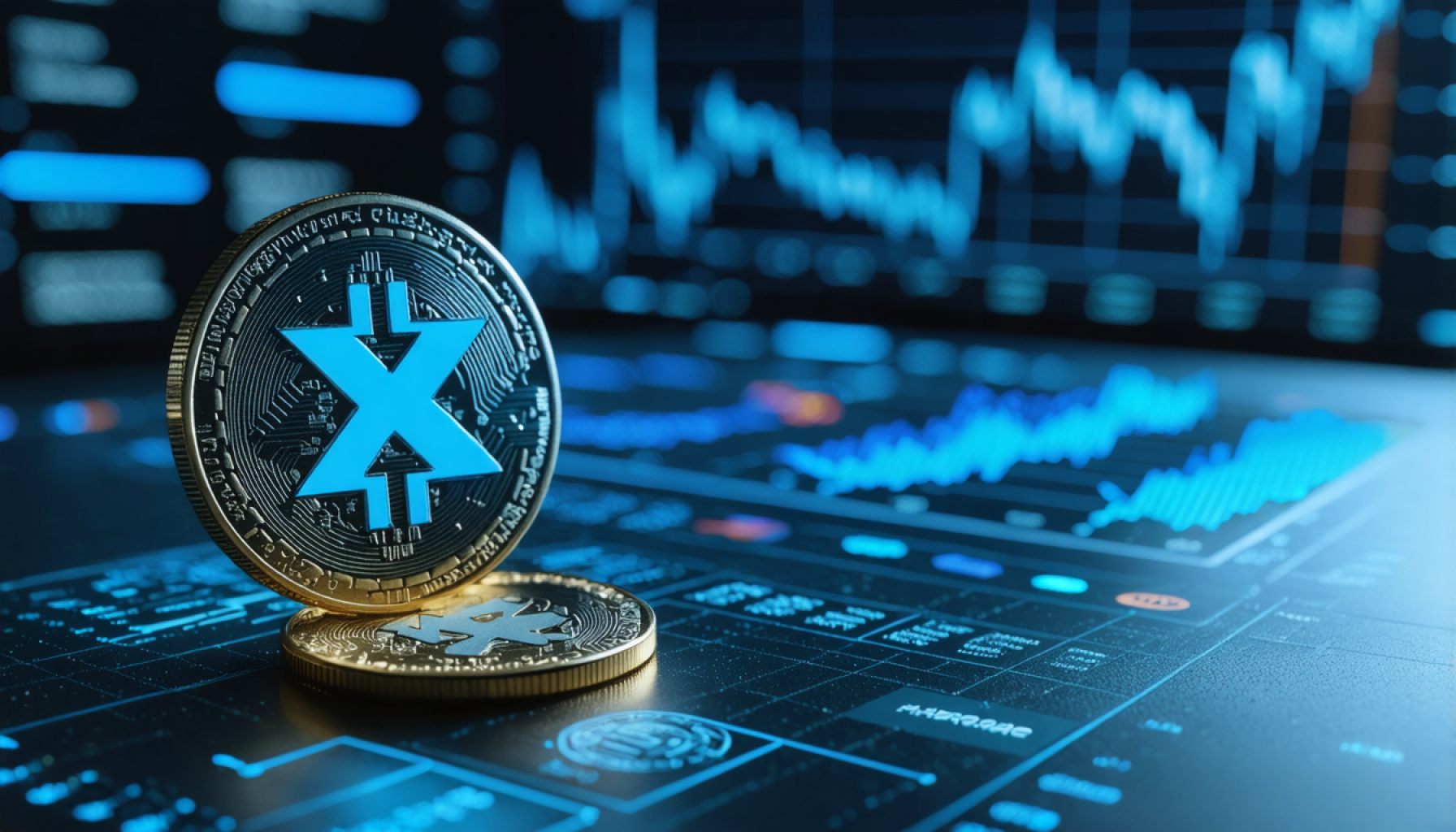- MEMX has filed for an XRP exchange-traded fund (ETF) as a “Commodity-Based Trust,” indicating XRP’s growing mainstream acceptance.
- The U.S. SEC’s recent decision positions XRP similarly to Bitcoin or Ethereum, potentially broadening its usage in financial markets.
- MEMX benefits from modern infrastructure with transparency and low fees, challenging traditional exchanges like NYSE and NASDAQ.
- Major financial institutions, such as Bank of America, show increasing interest in XRP, integrating it into conventional financial systems.
- Supportive regulatory stances encourage firms to explore ETFs and other digital asset innovations.
- The SEC’s February 2025 meeting could bring significant changes to XRP’s legal landscape.
Against a backdrop of shifting regulatory winds, MEMX, a rising star in securities exchanges, has set a bold course by filing for an XRP exchange-traded fund (ETF) recognized as a “Commodity-Based Trust.” This move represents more than an aggressive strategy; it signals a profound shift in XRP’s journey towards mainstream financial acceptance.
The landscape for cryptocurrencies is evolving fast. The U.S. SEC’s landmark ruling clarified XRP’s standing, swaying opinions towards recognizing it as something akin to Bitcoin or Ethereum, rather than an unregistered security. This classification opens doors, and exchanges like MEMX are sprinting towards them.
Unlike giants such as NYSE and NASDAQ, MEMX thrives on its contemporary infrastructure, marked by transparency and remarkably low fees. This aggressive competitiveness nudges the market into reconsidering how XRP and similar digital assets are perceived.
In an intriguing twist, financial titans like Bank of America hover nearby, having secured patents related to XRP. Their moves further underscore a burgeoning interest in integrating digital assets into traditional frameworks.
Fueling this momentum is an administration with a nuanced, pro-crypto stance, emboldening firms to explore novel financial frontiers through ETF vehicles. MEMX’s filing dovetails with efforts by other innovators like Canary Capital, riding a wave of optimism amid loosening regulatory constraints.
Meanwhile, all eyes turn to the SEC’s looming February 2025 closed meeting, shrouded in speculation. The mysterious agenda promises potential seismic shifts in XRP litigation outcomes. Observers and investors alike await with bated breath, sensing the winds of change and opportunity sweeping through the crypto landscape.
XRP’s New Frontier: How MEMX’s Bold ETF Move Could Reshape Crypto Investments
How-To Steps & Life Hacks
1. Understanding Exchange-Traded Funds (ETFs):
– An ETF is an investment fund traded on stock exchanges, much like stocks. It holds assets such as stocks, commodities, or bonds.
2. Investing in XRP:
– To invest in an XRP ETF, opening an account with a broker that supports ETF trading, like Fidelity or Charles Schwab, is essential.
– Conduct thorough research on XRP’s market trends using platforms like CoinMarketCap or Ripple’s official website.
3. Staying Updated:
– Follow the SEC’s announcements and market news through trusted financial news outlets like Bloomberg or Reuters.
Real-World Use Cases
1. Integration in Financial Systems:
– With fintech companies and banks like Bank of America securing patents involving XRP, there is potential for XRP-based transactions in international remittances and cross-border payments.
2. Hedging and Portfolio Diversification:
– Investors can use XRP ETFs to hedge against traditional market volatility while diversifying their cryptocurrency portfolio.
Market Forecasts & Industry Trends
1. ETF Market Potential:
– Analysts predict that cryptocurrency ETFs could see rapid growth, especially if U.S. regulatory frameworks become more accommodating.
2. Regulatory Impact:
– Should the February 2025 SEC meeting favor XRP’s official acknowledgment as a commodity, it could lead to a boom in XRP-related financial products.
Reviews & Comparisons
1. MEMX vs. Traditional Exchanges:
– MEMX is lauded for low fees and transparency, setting it apart from established exchanges like NYSE and NASDAQ, which have higher trading costs.
2. XRP ETF vs. Bitcoin and Ethereum ETFs:
– Bitcoin and Ethereum ETFs are already available, but an XRP ETF could attract investors looking for newer avenues with different risk profiles.
Controversies & Limitations
1. Regulatory Challenges:
– Despite positive trends, previous hurdles with the SEC highlight the possible risks in obtaining approval for crypto-related ETFs.
2. Market Volatility:
– Cryptocurrencies, including XRP, are prone to extreme price swings, which can affect ETF stability.
Features, Specs & Pricing
1. XRP ETF Features:
– Expected to provide liquidity similar to stocks, allowing investors to buy and sell throughout the trading day.
2. ETF Pricing:
– Pricing could be impacted by underlying asset value, market demand, and MEMX’s competitive fee structures.
Security & Sustainability
1. Blockchain Security:
– XRP operates on the Ripple network, known for its efficient and secure transactions.
2. Sustainability:
– XRP transactions are energy-efficient compared to Bitcoin, aligning with growing environmentally conscious investment practices.
Insights & Predictions
1. Analyst Predictions:
– Some experts predict a favorable outcome for XRP in regulatory frameworks could precipitate the growth of more crypto ETF options.
2. Investor Sentiment:
– Increasing institutional interest could solidify XRP’s position as a viable commodity in mainstream finance.
Tutorials & Compatibility
1. Trading Platforms Tutorial:
– Many brokerages offer tutorials for trading ETFs, suited for both beginners and seasoned investors.
2. Compatibility:
– Ensure the chosen brokerage supports ETF trading and is compatible with personal investment goals.
Pros & Cons Overview
Pros:
– Potential for high returns with growing acceptance.
– Diversification through ETFs.
– Lower fees with MEMX.
Cons:
– Market volatility.
– Regulatory risks.
Actionable Recommendations
1. Educate Yourself:
– Stay informed with educational resources from Investopedia.
2. Watch Market Developments:
– Follow updates from regulatory bodies like the SEC and Ripple’s announcements.
3. Balance Your Portfolio:
– Consider including both traditional stocks and crypto ETFs for a balanced investment strategy.
Related Links
– U.S. Securities and Exchange Commission
– Ripple Official Site
– Bloomberg
Keep an eye on how regulatory landscapes evolve and consider diversifying your investment strategies to capitalize on emerging opportunities in the crypto sector with innovative products like XRP ETFs.

















